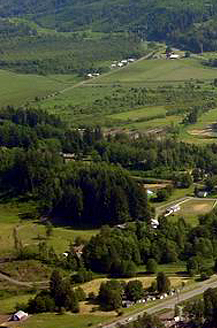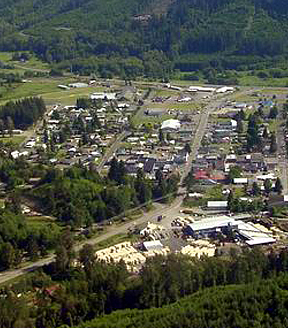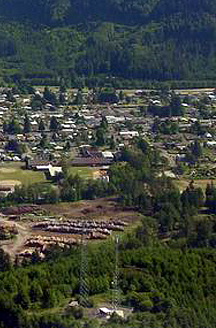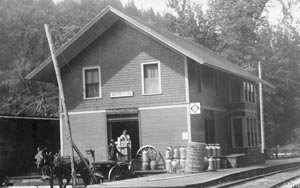
Built in 1910 and newly renovated, the historic Morton Depot is a prime example of Morton’s preference and pride.
Shortly after the railroad came to Morton in 1910, a depot was built to service the fast-paced rail industry. In fact, until 1980, the city of Morton was served by the Milwaukee (Chehalis Western) Railroad. In 1992, the city acquired the right of way and in 1995, through a combination purchase and donation from Weyerhaeuser Company, the Morton Depot was sold for $10 to the Eastern Lewis County Historical Society, now referred to as the Cowlitz River Valley Historical Society in 1984. However, its location adjacent to the Tuba-4 mill was presenting challenges for the mill and the community had aspirations of the depot becoming a tourist draw and visitor center.
In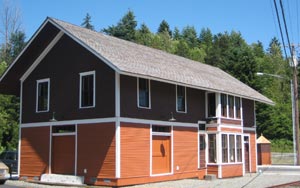 2000, work began on plans to relocate the depot to a more prominent location. In 2002, the relocation, rehabilitation and property development of the depot was voted the top economic revitalization project in the city of Morton. The vision included preserving a piece of Washington’s timber and railroad heritage, serving as a living museum and repository of artifacts, incorporating a gift shop and visitor center, and potentially serving as a terminus for the Mount Rainier Scenic Railroad. Plans also included picnic areas, restroom facilities and outdoor artifact displays.
2000, work began on plans to relocate the depot to a more prominent location. In 2002, the relocation, rehabilitation and property development of the depot was voted the top economic revitalization project in the city of Morton. The vision included preserving a piece of Washington’s timber and railroad heritage, serving as a living museum and repository of artifacts, incorporating a gift shop and visitor center, and potentially serving as a terminus for the Mount Rainier Scenic Railroad. Plans also included picnic areas, restroom facilities and outdoor artifact displays.
In 2005, the vision was realized when the depot was moved to its current location. A star performance, the relocation effort was filmed by the History Channel’s Mega Movers TV series. Recognized nationally for its unique architectural design, historic integrity, and cultural importance, the Morton Depot is the sole remaining structure on the historic Tacoma Eastern, later Milwaukee Railroad National Park Rail Line.
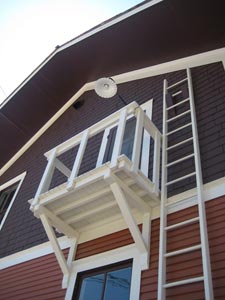 Thousands of dollars in Federal, State and Local grants were utilized to move and renovate the depot and the surrounding property. Thousands of more hours of labor have been contributed by local community members. Together, time and money have resulted in an attractive restoration project. Years later, the progress is obvious. More plans are underway to create a new Visitor Center/Interpretive Building next door to house the Cowlitz River Valley Historical Society’s assets and to serve as a location to greet visitors who come to remember the heritage of the railroad and timber industry of times now past.
Thousands of dollars in Federal, State and Local grants were utilized to move and renovate the depot and the surrounding property. Thousands of more hours of labor have been contributed by local community members. Together, time and money have resulted in an attractive restoration project. Years later, the progress is obvious. More plans are underway to create a new Visitor Center/Interpretive Building next door to house the Cowlitz River Valley Historical Society’s assets and to serve as a location to greet visitors who come to remember the heritage of the railroad and timber industry of times now past.
